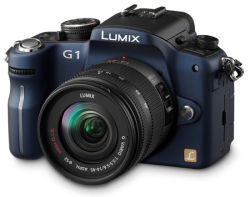DxOMark releases Raw data analyzes of Panasonic Lumix G1, Olympus E-420 and E-510

DxOMark has released their test data of Raw files from the first micro Four Thirds camera, the Panasonic Lumix DMC-G1. They have also released test data of the performance on Raw files from the entry level DSLR camera from Olympus, the E-420 and E-510.
All the test data can be read on the DxOMark website.
Press release:
DxOMark Releases Analyses of Panasonic Lumix G1, Olympus E-420 and E-510
dxomark.com publishes Raw performance data on the first-ever Micro Four Thirds camera, along with data on two Four Thirds system cameras
PARIS, France — Jan. 27 — DxO Labs has announced the publication of detailed Raw-based image quality data and DxOMark Sensor rankings on its popular http://www.dxomark.com Web site for two additional Four Thirds format cameras, the Olympus E-420 and E-510, as well as for the first commercially-released Micro Four Thirds format camera, the Panasonic Lumix G1.
With the addition of the data on the new Olympus cameras, the Four Thirds category is now well represented on dxomark.com, with a total of five models (including previously-released data on the Olympus E-3 and E-520 and the Panasonic Lumix DMC L10).
The Panasonic Lumix G1 is the first commercially-available camera using the new Micro Four Thirds technology unveiled this past August. Other models using this format are expected to become available this year.
As the name suggests, Micro Four Thirds camera bodies are smaller than conventional Four Thirds cameras because the lens mount is smaller and the traditional mirror and pentaprism have been replaced by an electronic viewfinder. Despite the difference in overall size, however, both conventional Four Thirds cameras and Micro Four Thirds cameras have the same image sensor size and specifications. This means that photographers can easily compare both kinds of cameras’ Raw-based performance on the DxOMark Sensor scale, regardless of other differences (optics, ease of handling, etc.).
